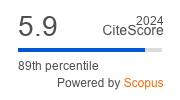Article | Open Access
Digital Participation and Risk Contexts in Journalism Education
| Views: | 4735 | | | Downloads: | 2736 |
Abstract: High school journalism programs nurture student voice, information literacy, and collaboration. Journalism programs do not merely produce commodities; they help students constitute a public within a school community. When publishing online, student journalists navigate relationships behind the scenes with stakeholders, including peers, adults, and the institution. Publishing can be fraught with hesitation and fear of consequences for speaking out. Because of this implication, journalism programs can serve as “potentially valuable yet imperfect” settings for the amplification of student voice and civic development, but can also unduly limit students’ self-expression, especially for girls (Bobkowski & Belmas, 2017). What might be the affordances and constraints of digital participation in a high school journalism program? How might youth journalists and other participants navigate exigencies of publishing online in this context? We, the head editors and adviser, use grounded theory to examine processes and develop pragmatic knowledge (Glaser & Strauss, 2017). Through a mix of prompts, group interviews, and participant observation, we develop a case study that demonstrates implications for ‘risk context,’ or the total situation of an actor’s vulnerability brought on by digital participation in publishing online. We describe what digital participation is good for, and for whom, thus further theorizing relationships between agency and co-production.
Keywords: digital participation; digital writing; high school; journalism; journalistic collaboration; risk
Published:
© Mark Dzula, Sydney Wuu, Janitza Luna, Amelie Cook, Summer Chen. This is an open access article distributed under the terms of the Creative Commons Attribution 4.0 license (http://creativecommons.org/licenses/by/4.0), which permits any use, distribution, and reproduction of the work without further permission provided the original author(s) and source are credited.


